Politics
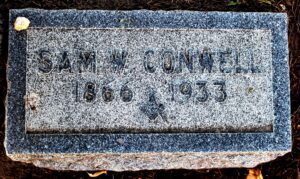
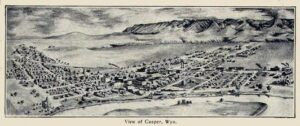 In a city, there are sometimes people who become the influencers of the community. These people are the ones who shape the city into what it is today. These people are considered the “pillars of the community” and are well liked and respected. Many of the city’s most influential people have streets, parks, and even buildings named after them to honor them.
In a city, there are sometimes people who become the influencers of the community. These people are the ones who shape the city into what it is today. These people are considered the “pillars of the community” and are well liked and respected. Many of the city’s most influential people have streets, parks, and even buildings named after them to honor them.
In Casper, Wyoming, where I live, that “pillar of the community” was a man from Iowa named Samuel W Conwell. Conwell was that “man about town” socialite who was well liked and respected. He really cared about his adopted community, and he helped to shape it into the city it is today. The people of Casper totally agreed that Samuel W Conwell was an amazing influencer in Casper, so they named a 19-block street after him. Conwell Street begins at the East 1st Street intersection where Conwell Park is located. Conwell was born on June 26, 1866, in Iowa, the Hawkeye State, but he moved to Casper around 1895 and immediately began to make his mark on our little town. Over the next four decades, he worked at a number of jobs, including as cashier at the Richards and Cunningham Bank and the Casper National Bank, and later he was the Secretary-Treasurer for the Nicolaysen Lumber Company. Samuel Conwell was a man who wore several hats in his life. He was also an early Casper Fireman.
Some of his other notable milestones achieved while living in and influencing the growth and progress of Casper include serving on high school and district school boards for three decades and helping to build the high school (now known as Natrona County High School, as well as shaping Casper’s educational progress during his time on those boards. Conwell was a county commissioner from 1911-1914. In addition to being a fireman Conwell helped organize the Casper Volunteer Fire Department and then served as its Chief, too. He was the past president of the Casper Chamber of Commerce, and also served as chairman of its traffic committee. In 1921, he was appointed by Governor Carey to the State Highway Commission, where he served the rest of his life. His many contributions to our community, definitely earned him the honors he was later given.


After a long illness, Samuel Conwell died at his home on 241 West 9th Street, on January 31, 1933, at the age of 66. Conwell Street and Conwell Park were not names given randomly by the developer who was just trying to come up with the names, but rather they are names given to represent a pillar of the community, and a man whose spirit lives on in the city.

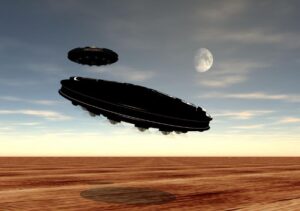 Seventy-five years ago, people began seeing and having an interest in seeing Unidentified Flying Objects (UFOs). A place called Roswell, New Mexico became famous for UFO sightings, and the Air Force found itself denying any sightings. People who saw the UFOs maintained that they “know what they saw!” Roswell, New Mexico is located near the Pecos River in the southeastern part of the state. Roswell became a magnet for UFO believers due to the strange events of early July 1947, when ranch foreman W.W. Brazel found a strange, shiny material scattered over some of his land. It was like nothing he or anyone else had ever seen before.
Seventy-five years ago, people began seeing and having an interest in seeing Unidentified Flying Objects (UFOs). A place called Roswell, New Mexico became famous for UFO sightings, and the Air Force found itself denying any sightings. People who saw the UFOs maintained that they “know what they saw!” Roswell, New Mexico is located near the Pecos River in the southeastern part of the state. Roswell became a magnet for UFO believers due to the strange events of early July 1947, when ranch foreman W.W. Brazel found a strange, shiny material scattered over some of his land. It was like nothing he or anyone else had ever seen before.
I’m not one to believe in UFOs, but I must admit that these were unusual sightings. Public interest in Unidentified Flying Objects, or UFOs, began to flourish in the 1940s, when developments in space travel and the dawn of the atomic age caused many Americans to turn their attention to the skies. Brazel turned the material over to the sheriff, who passed it on to authorities at the nearby Air Force base. Not unexpectedly, the Air Force officials announced they had recovered the wreckage of a “flying disk.” A local newspaper put the story on its front page, launching Roswell into the spotlight of the public’s UFO fascination. I’m sure the newspaper was beyond excited to get the story, because a good story is great for selling newspapers…especially when it is unbelievable.
Of course, in typical government style, the Air Force took back their story, saying the debris had been merely a downed weather balloon. After that, the general public lost interest in the UFO, except for the die-hard UFO believers, nicknamed “ufologists.” With that, the “Roswell Incident” faded into oblivion…until the late 1970s. Then, claims surfaced that the military had invented the weather balloon story as a cover-up. Of course, these would be considered the conspiracy theorists of their day. Believers in this theory insisted that officials had retrieved several alien bodies from the crashed spacecraft, which were now stored in the mysterious Area 51 installation in Nevada. Now, the Air Force had clean-up to do. Seeking to dispel these suspicions, the Air Force issued a 1,000-page report in 1994 stating that “the crashed object was actually a high-altitude weather balloon launched from a nearby missile test-site as part of a classified experiment aimed at monitoring the atmosphere in order to detect Soviet nuclear tests.” Then on June 24, 1997, US Air Force officials release a 231-page report dismissing long-standing claims of an alien spacecraft crash in Roswell, New Mexico, almost exactly 50 years earlier.
Many people have heard this story, of course, and Area 51 remains a mystery to many people to this day. Most think that the whole thing was a hoax or a weather balloon, but now…suddenly, NASA has decided to take up the study of UFOs…seriously!! See, that, to me, seems more like a conspiracy theory or at the very least a way to take our minds off of other events going on in our world today, than it is a legitimate search for UFOs or 
 anything else. According to a story by The Sun, on May 27, 2022, “NASA has reportedly confirmed it will officially join the hunt for UFOs after a groundbreaking UAP Congress hearing earlier this month. Unidentified Aerial Phenomena (UAPs) and official sightings were recently discussed at a public US Congress hearing on May 17. Nasa had previously said it “does not actively search for” or research UAPs.” What a way to spend our money…and why now, after all these years.
anything else. According to a story by The Sun, on May 27, 2022, “NASA has reportedly confirmed it will officially join the hunt for UFOs after a groundbreaking UAP Congress hearing earlier this month. Unidentified Aerial Phenomena (UAPs) and official sightings were recently discussed at a public US Congress hearing on May 17. Nasa had previously said it “does not actively search for” or research UAPs.” What a way to spend our money…and why now, after all these years.
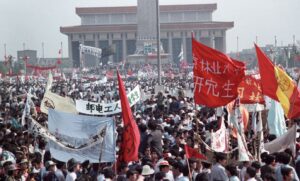 Some heroes are forever unknown, and the hero of Tiananmen Square remains unknown to this day. I’m not sure how they can manage never to tell anyone about their heroic act, but then in 1989 Bejing, China, being able to keep your mouth shut was tantamount to staying alive.
Some heroes are forever unknown, and the hero of Tiananmen Square remains unknown to this day. I’m not sure how they can manage never to tell anyone about their heroic act, but then in 1989 Bejing, China, being able to keep your mouth shut was tantamount to staying alive.
The summer of 1989 found Tiananmen Square in Bejing overtaken with pro-democracy protestors…a situation that the communist government was not happy about. Students, workers, soldiers, and teachers had joined together in peaceful protest, seeking democracy, freedom of the press, and freedom of speech. As the protests progressed, they were joined by more, and more…and still more people. At the height of the protest, an estimated one million people were milling around in the square, and their efforts were becoming known worldwide. In fact, the world was becoming inspired by the efforts of the protestors.
The Chinese government, however, was becoming highly agitated by what was going on, because they felt like they were losing control. So, on June 4, the Chinese government cracked down on those protests in the most horrific way. They sent in armed military and tanks. The inevitable result was that the government killed hundreds, and even thousands of protestors, even shooting them in the back as they were running away.
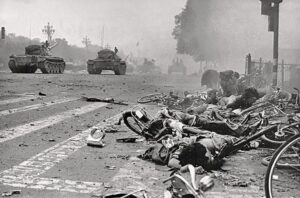
The killing continued into the next day, and just after noon on June 5 a line of eighteen tanks began rolling down Avenue of Eternal Peace. The tanks, representative of a corrupt government power, came lumbering down the street…impenetrable, unstoppable, and fully able to squash a person like a bug. The show of force continued its parade down the Avenue, toward Tiananmen Square…until one lone man stood in their way. The unknown man, dressed in a simple white shirt and black pants, holding two shopping bags, strode into the Avenue and stood directly in front of the lead tank. Amazingly, it stopped. Then the tank moved right, but the unknown man countered. Then it moved left, and he countered again. The standoff drew national attention, and the unknown man became known as “Tank Man.” The interaction lasted just a few minutes, it proved that one “everyday person” can accomplish a lot, by standing up to tyranny. One report suggested that he was the son of factory workers…a blue-collar guy growing up in a blue-collar family in a blue-collar neighborhood. And because of censorship restrictions in China, he may not even know about the images of him, or that Time Magazine named him one of the century’s “top revolutionaries.” The reality is that he wasn’t a revolutionary…at least not in the sense that he went out and fought with the resistance. He was just a guy who saw something that was horribly wrong and decided that it was enough!! His stand said simply, “No More!!”
This everyday citizen managed, single-handedly to stop the killing that day, and he intended to do it even if it 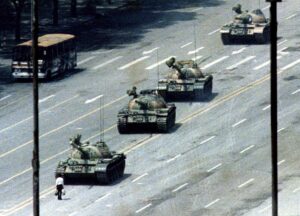 cost him his life. That is inspiring, because it tells us that if we see something wrong and decide to take action, we too can change the world. If we sit idly by and do nothing to stop tyranny, then we are no better than those who are bringing tyranny.
cost him his life. That is inspiring, because it tells us that if we see something wrong and decide to take action, we too can change the world. If we sit idly by and do nothing to stop tyranny, then we are no better than those who are bringing tyranny.
We are seeing movements just like this one man since the 2020 election. People who have never run for office before, suddenly are. People are showing up at school board meetings, city council meeting, and other such governmental meetings. People are taking a stand and proving that we are a voice to be reconned with, and we will not be bullied anymore.
 In the Battle of Trafalgar, on October 21, 1805, the British Royal Navy took on the combined fleets of the French and Spanish Navies during the War of the Third Coalition (August–December 1805) of the Napoleonic Wars (1803–1815), and soundly defeated them. As the French and Spanish Navies came into sight, Admiral Horatio Nelson raised one set of signal flags. His orders were simple and direct, “England expects every man to do his duty.” His men knew exactly what he meant and what was expected of them…fight, and if necessary, die for their country!! Without hesitation, Nelson’s ships closed in on and destroyed their enemy. The victory of this battle has been called the greatest naval victory in history, and for the remainder of the century, the British really had control over the oceans and the world. In the years following that victory, the British grew lackadaisical about keeping a strong military force, and 111 years later, that issue would be evident for the British Royal Navy when they went up against the Germans in the Battle of Jutland.
In the Battle of Trafalgar, on October 21, 1805, the British Royal Navy took on the combined fleets of the French and Spanish Navies during the War of the Third Coalition (August–December 1805) of the Napoleonic Wars (1803–1815), and soundly defeated them. As the French and Spanish Navies came into sight, Admiral Horatio Nelson raised one set of signal flags. His orders were simple and direct, “England expects every man to do his duty.” His men knew exactly what he meant and what was expected of them…fight, and if necessary, die for their country!! Without hesitation, Nelson’s ships closed in on and destroyed their enemy. The victory of this battle has been called the greatest naval victory in history, and for the remainder of the century, the British really had control over the oceans and the world. In the years following that victory, the British grew lackadaisical about keeping a strong military force, and 111 years later, that issue would be evident for the British Royal Navy when they went up against the Germans in the Battle of Jutland.
Apparently not understanding that things were no longer what they used to be, a British naval force commanded by Vice Admiral David Beatty confronted a squadron of German ships, led by Admiral Franz von Hipper, approximately 75 miles off the Danish coast, just before 4:00 on the afternoon of May 31, 1916. In what was later called the greatest naval battle of World War I, the two squadrons opened fire on each other simultaneously, beginning the opening phase of the Battle of Jutland.
Following the Battle of Dogger Bank in January 1915, the German navy knew that they were, at the very least, numerically inferior to the British Royal Navy, so the Germans chose not to engage them in a major battle for more than a year. During that time, they began pursuing a new strategy for their naval warfare…namely, its lethal U-boat submarines. Biding his time, Vice Admiral Reinhard Scheer waited until May 1916, when the majority of the British Grand Fleet was anchored far away, at Scapa Flow, off the northern coast of Scotland. Then Sheer, the commander of the German High Seas Fleet, believed the time was right to resume attacks on the British coastline. The unique coding system of the U-boats made it very difficult for the British to know what was coming. Scheer ordered 19 U-boat submarines to position themselves for a raid on the North Sea coastal city of Sunderland while using air reconnaissance crafts to keep an eye on the British fleet’s movement 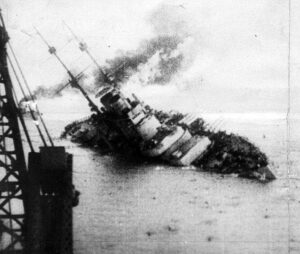 from Scapa Flow. The first planned raid was scrapped because of bad weather, and Scheer instead ordering his fleet, consisting of 24 battleships, five battle cruisers, 11 light cruisers, and 63 destroyers, to head north, to the Skagerrak, a waterway located between Norway and northern Denmark, off the Jutland Peninsula, where they could attack Allied shipping interests…hoping to punch a hole in the stringent British blockade.
from Scapa Flow. The first planned raid was scrapped because of bad weather, and Scheer instead ordering his fleet, consisting of 24 battleships, five battle cruisers, 11 light cruisers, and 63 destroyers, to head north, to the Skagerrak, a waterway located between Norway and northern Denmark, off the Jutland Peninsula, where they could attack Allied shipping interests…hoping to punch a hole in the stringent British blockade.
Truly, the only thing that saved the British Grand Fleet that night was that unbeknownst to Scheer, a newly created intelligence unit located within an old building of the British Admiralty, known as Room 40, had cracked the German codes and warned the British Grand Fleet’s commander, Admiral John Rushworth Jellicoe, of Scheer’s intentions. So, the night before the planned attack…May 30, 1916, a British fleet of 28 battleships, nine battle cruisers, 34 light cruisers, and 80 destroyers set out from Scapa Flow, bound for positions off the Skagerrak.
Then, on May 31, 1916, at 2:20pm, Beatty, leading a British squadron, spotted Hipper’s warships. The squadrons quickly maneuvered south to get a better position, and shots were fired at about 3:48 that afternoon. They fought for 55 minutes, the British losing two British battle cruisers, Indefatigable and Queen Mary. Over 2,000 sailors lost their lives in the battle. At 4:43pm, Hipper’s squadron was joined by the remainder of the German fleet, commanded by Scheer. The British were out gunned, and Beatty was forced to fight a delaying action for the next hour, until Jellicoe could arrive with the rest of the Grand Fleet.
Once both entire fleets were there, they faced off. It was a huge battle of naval strategy between the four commanders, and particularly between Jellicoe and Scheer. As the fleets continued to engage each other throughout the late evening and the early morning of June 1, Jellicoe maneuvered 96 of the British ships into a V-shape surrounding 59 German ships. Hipper’s flagship, Lutzow, was disabled by 24 direct hits, but was still able to sink the British battle cruiser Invincible, before it sank too. Just after 6:30 on the evening of June 1, Scheer’s fleet executed a previously planned withdrawal under cover of darkness to their base at the German port of Wilhelmshaven, ending the battle and cheating the British of the major win they had envisioned.
The Battle of Jutland…or the Battle of the Skagerrak, as it was known to the Germans, involved a total of 100,000 men aboard 250 ships over the course of 72 hours. The Germans, claimed vistory, and the British had to agree…at first anyway. The German navy lost 11 ships, including a battleship and a battle cruiser, and 3,058 men lost their lives. The British losses were heavier, with 14 ships sunk, including three battle cruisers, and 6,784 lives lost. The only thing that made the British losses seem less was that ten more German ships had suffered heavy damage, and by June 2, 1916, only 10 of the German ships that had been involved in the battle were ready to leave port again. Jellicoe, on the other hand, could have put 23 British ships to sea. On July 4, 1916, Scheer reported to the German high command that further fleet action was not an option, and that 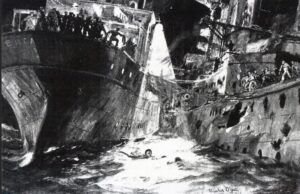 submarine warfare was Germany’s best hope for victory at sea. Despite the missed opportunities and heavy losses, the Battle of Jutland had left British naval superiority on the North Sea intact, but if they had been better prepared, they might have held a place of domination over the Germans then. When a nation decides to sit back and ride on its reputation, rather than continue a practice of a strong military force, that nation can find itself in a tough spot when the enemy attacks. The British could have had a very different outcome, but maybe better aim or the favor of God held the German High Seas Fleet at bay. They made no further attempts to break the Allied blockade or cross the Grand Fleet for the rest of World War I.
submarine warfare was Germany’s best hope for victory at sea. Despite the missed opportunities and heavy losses, the Battle of Jutland had left British naval superiority on the North Sea intact, but if they had been better prepared, they might have held a place of domination over the Germans then. When a nation decides to sit back and ride on its reputation, rather than continue a practice of a strong military force, that nation can find itself in a tough spot when the enemy attacks. The British could have had a very different outcome, but maybe better aim or the favor of God held the German High Seas Fleet at bay. They made no further attempts to break the Allied blockade or cross the Grand Fleet for the rest of World War I.
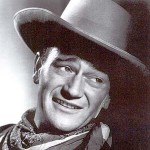
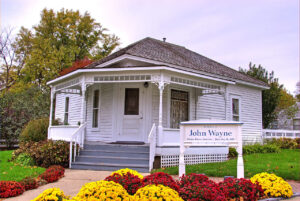 Most people, these days, have probably never heard of Marion Robert Morrison, although I’ll bet that most people have seen at least one of his movies, or at the very least a commercial advertising one of his movies on some of the old movie channels. Maybe if I said that his name was John Wayne or even The Duke (his famous nickname), more people would recognize the famous American West actor. John Wayne actually became the epitome of the American West. Wayne was born on May 26, 1907, at 224 South Second Street in Winterset, Iowa, to Clyde Leonard Morrison (1884–1937), who was the son of American Civil War veteran Marion Mitchell Morrison (1845–1915), and the former Mary “Molly” Alberta Brown (1885–1970), who was from Lancaster County, Nebraska. He weighed a whopping 13 pounds at birth. Wayne claimed his middle name was soon changed from Robert to Michael when his parents decided to name their next son Robert. That fact, if it is a fact, cannot be confirmed even with extensive research, because no such legal change was found. Wayne’s legal name remained Marion Robert Morrison his entire life, but he often went by Marion Michael Morrison…before becoming John Wayne.
Most people, these days, have probably never heard of Marion Robert Morrison, although I’ll bet that most people have seen at least one of his movies, or at the very least a commercial advertising one of his movies on some of the old movie channels. Maybe if I said that his name was John Wayne or even The Duke (his famous nickname), more people would recognize the famous American West actor. John Wayne actually became the epitome of the American West. Wayne was born on May 26, 1907, at 224 South Second Street in Winterset, Iowa, to Clyde Leonard Morrison (1884–1937), who was the son of American Civil War veteran Marion Mitchell Morrison (1845–1915), and the former Mary “Molly” Alberta Brown (1885–1970), who was from Lancaster County, Nebraska. He weighed a whopping 13 pounds at birth. Wayne claimed his middle name was soon changed from Robert to Michael when his parents decided to name their next son Robert. That fact, if it is a fact, cannot be confirmed even with extensive research, because no such legal change was found. Wayne’s legal name remained Marion Robert Morrison his entire life, but he often went by Marion Michael Morrison…before becoming John Wayne.
When he was six years old, Wayne’s family moved to Glendale, California, where he like many teens in those days, had a paper route that got him up at four in the morning to deliver newspapers. After school, he played football and made deliveries for local stores. After high school, he had big ambitions to attend the U.S. Naval Academy, but his dreams were dashed when they rejected him. Then, he accepted a full scholarship to play football at the University of Southern California in Los Angeles, which is quite likely the very thing that led to his entire future, and not in football or academics.
For most football players, having a job isn’t an easy feat, because of the football and study schedules, so in the summer of 1926, Wayne’s football coach found him a job as an assistant prop man on the set of a movie directed by John Ford. Ford saw something more is the handsome young football player, and he started to use Wayne as an extra in his films. It’s strange, maybe, that I think that John Wayne became more handsome as he got older. The younger verson, while handsome, lacked the character that really defines some men. That led to larger roles, and in 1930, Ford recommended John Wayne for Fox’s epic Western, “The Big Trail.” Wayne won the part, but the movie did poorly, and Fox let his contract lapse. That didn’t deter John Wayne, who had by then been bitten by the acting bug. Over the next decade, he worked tirelessly on a number of low-budget films, to improve his acting abilities, and in the end, his old friend and mentor, John Ford gave him his big break, when he cast him in the 1939 western, “Stagecoach.” The rest is history, as John Wayne starred in more than 77 movies. Including my favorites, “Maclintock,” “True Grit,” “The Sons of Katie Elder,” and “Hell Fighters.” While John Wayne got his start in Westerns, he also did a number of military movies. It wasn’t hard to transition from a valiant cowboy or cavalry soldier to the brave WWII fighters of films like Sands of Iwo Jima (1949) and Flying Leathernecks (1951). John Wayne was deeply conservative in his politics, and he used his 1968 film, The Green Berets, to express his support of the American government’s war in Vietnam.
Unfortunately, by the late 1960s, some Americans had tired of Wayne and his simplistically masculine and patriotic characters. I simply cannot understand that at all, except that people had started to look for the increasingly sinister in movies. Sadly, western movies began rejecting the simple black-and-white moral codes championed by Wayne and replacing them with a more complex and tragic view of the American West…not a good move for the people. Nevertheless, John Wayne proved more adaptable than many expected. True Grit 
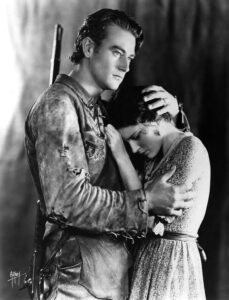 (1969) allowed him to escape the narrow confines of his own good-guy image, but still remain basically “the good guy” in reality. Nevertheless, John Wayne was entering the final years of his life, whether he knew it or not. His final film, The Shootist (1976), proved once and for all that he was an actor who had earned the right to be called elite, when he won over even his most severe critics. At the time of the filming of “The Shootist,” John Wayne was battling lung cancer, while playing the part of a dying gunfighter whose moral codes and principles no longer fit in a changing world. Three years later, Wayne died of cancer. To this day, public polls identify him as one of the most popular actors of all time.
(1969) allowed him to escape the narrow confines of his own good-guy image, but still remain basically “the good guy” in reality. Nevertheless, John Wayne was entering the final years of his life, whether he knew it or not. His final film, The Shootist (1976), proved once and for all that he was an actor who had earned the right to be called elite, when he won over even his most severe critics. At the time of the filming of “The Shootist,” John Wayne was battling lung cancer, while playing the part of a dying gunfighter whose moral codes and principles no longer fit in a changing world. Three years later, Wayne died of cancer. To this day, public polls identify him as one of the most popular actors of all time.
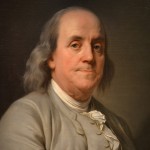
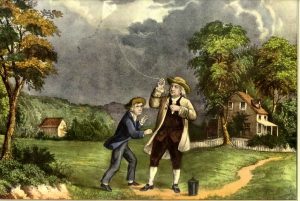 Firefighter and Benjamin Franklin…not usually thought of in the same sentence, but really, they should be. In 1736, Benjamin Franklin was already a young man of influence, but his ambitions didn’t stop at just a few. Most of us think of Benjamin Franklin as a scientist, inventor, founding father, prankster, and writer, but firefighter…hmmmmm, not so much. Nevertheless, Benjamin Franklin was a visionary. He saw a problem and decided to fix it.
Firefighter and Benjamin Franklin…not usually thought of in the same sentence, but really, they should be. In 1736, Benjamin Franklin was already a young man of influence, but his ambitions didn’t stop at just a few. Most of us think of Benjamin Franklin as a scientist, inventor, founding father, prankster, and writer, but firefighter…hmmmmm, not so much. Nevertheless, Benjamin Franklin was a visionary. He saw a problem and decided to fix it.
By 1736 Franklin had adopted Philadelphia, Pennsylvania as his home, but during a visit to his hometown of Boston, Massachusetts, he witnessed a fire, and his mind went into overdrive. What he saw was that the safety precautions to keep fire from spreading seemed to be far more advanced in Boston than in Philadelphia. At that time, Philadelphia’s infrastructure was basically a maze of wooden buildings and houses squeezed together in such a way that it was almost like kindling for a bonfire. Franklin saw this decided that something needed to be done. So, he published his findings in his own Philadelphia Gazette. In doing so, he turned up a different kind of heat. Before long, he was able to round up about 30 of his friends and fellow business owners who were interested. So together, the founded the Union Fire Company. Franklin made sure that The Union Fire Company was a non-profit organization…run completely by volunteers. What made this attractive to these business owners is that it was essentially a promise, to always have each other’s backs, if a fire broke out on or close to one of their properties. Not only were they promising to help extinguish the flames and save homes, but each member was required to keep a heavy-duty bag in which to smuggle out any possessions they could salvage as well. It was a code of honor to try, in the midst of disaster, to salvage whatever they could of the lives of the occupants. The Union Fire Company quickly became the biggest fire relief company in the Colonies, or as they later became, the United States.
Never being one to just sit back and tell others what to do, Benjamin Franklin became a volunteer firefighter himself. Soon, there were six volunteer corps established in Philadelphia. This fire company was the first volunteer fire company of its kind in the United States. When people saw how well the system worked, volunteer fire companies sprung up across the city and soon all over the country. We think of Benjamin Franklin 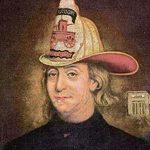
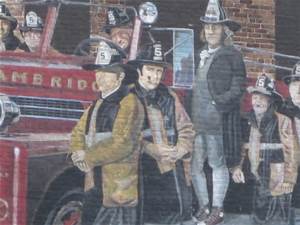 as many things, but in reality, we should maybe think of him as much more than we do. He was the brainchild behind the Great Compromise, which created the Congress we still have today. He was also the first fireman in another way. He “put out the fiery debates” and created a sense of compromise and peace among the founding fathers of our nation too, but he was an actual firefighter in that he actually fought the fires in his city.
as many things, but in reality, we should maybe think of him as much more than we do. He was the brainchild behind the Great Compromise, which created the Congress we still have today. He was also the first fireman in another way. He “put out the fiery debates” and created a sense of compromise and peace among the founding fathers of our nation too, but he was an actual firefighter in that he actually fought the fires in his city.

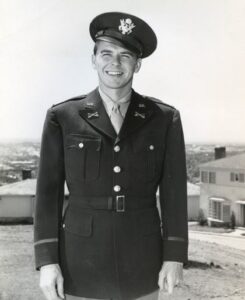 It’s almost unheard of to have a cavalry officer suddenly completely move in a different direction, and become an Army Air Force officer, but on May 15, 1942, Lieutenant Ronald Reagan, who had enlisted in the Army in 1935, was a cavalry officer at the time, applied for reassignment to the Army Air Force. Switching from the Army to the Army Air Force, while not unheard of, was an unusual event, especially in that no one really expected to be in the service for an extended period of time. For the most part, during World War II, it had been agreed upon that the soldier would be returned to the United States by February 1946. That said, it didn’t always make sense to make such a big move as switching branches of service.
It’s almost unheard of to have a cavalry officer suddenly completely move in a different direction, and become an Army Air Force officer, but on May 15, 1942, Lieutenant Ronald Reagan, who had enlisted in the Army in 1935, was a cavalry officer at the time, applied for reassignment to the Army Air Force. Switching from the Army to the Army Air Force, while not unheard of, was an unusual event, especially in that no one really expected to be in the service for an extended period of time. For the most part, during World War II, it had been agreed upon that the soldier would be returned to the United States by February 1946. That said, it didn’t always make sense to make such a big move as switching branches of service.
Then Lieutenant Ronald Reagan was, at least at that time, mostly looking to have a career in acting, and it was here that he would eventually put his thespian background to use making World War II propaganda films. Once his transfer was approved on June 9, 1942, Reagan was given a job as a public relations officer for the First Motion Picture Unit. The First Motion Picture Unit (FMPU) produced military training, morale, and propaganda films to aid the war effort. FMPU released Frank Capra’s “Why We Fight” series and a documentary of the bomber Memphis Belle, the crew of which completed a standard-setting 25 bombing missions in Europe for the first time. No other plane and crew, to that date, had managed to fly the 25 missions and make it back. War was a dangerous lifestyle for the Allied planes. The films were screened on domestic training grounds and in troop camps overseas as well as in movie theaters at home. The Memphis Belle documentary gave people hope that it could be done, and all was not lost.
Reagan did several other films, one of which, “Air Force,” which was later renamed “Beyond the Line of Duty.” That movie told the true story of the heroic feats of aviator Shorty Wheliss and his crew. Reagan narrated the film. While the documentary was originally intended simply to promote investment in war bonds, it won an 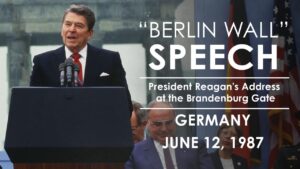
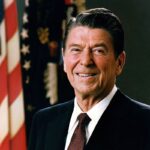 Academy Award in 1943 for best short subject. Reagan went on to narrate or star in three more shorts for FMPU including “For God and Country,” “Cadet Classification,” and “The Rear Gunner.” Reagan also appeared as Johnny Jones in the 1943 full-length musical film This is the Army. Of course, as we all know, Ronald Reagan’s true destiny was to become one of our greatest presidents of all time and a very brave man.
Academy Award in 1943 for best short subject. Reagan went on to narrate or star in three more shorts for FMPU including “For God and Country,” “Cadet Classification,” and “The Rear Gunner.” Reagan also appeared as Johnny Jones in the 1943 full-length musical film This is the Army. Of course, as we all know, Ronald Reagan’s true destiny was to become one of our greatest presidents of all time and a very brave man.

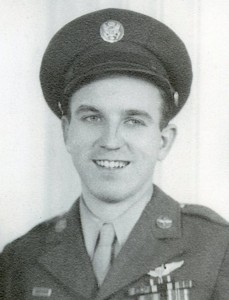 My favorite part of war history, if a person should have a favorite part, would be World War II. It was the war my dad, Allen Spencer fought in, and maybe that is why I am so interested in it and in the B-17 Flying Fortress, from which he fought and returned home. The men and women who fought in World War II are called the Greatest Generation, and maybe because my dad was a part of that, I am partial to that part of history. I find it a bit strange that while the Vietnam Memorial Fund, Inc (VVMF) was incorporated as a non-profit organization to establish a memorial to veterans of the Vietnam War, on April 27, 1979, four years after the Fall of Saigon, but the World War II Memorial didn’t open until April 29, 2004, in Washington DC. Of course, I think it was cool that it opened on my birthday, but it really was a long overdue recognition for the 16 million US men and women who served in the war. The memorial is located on 7.4 acres on the former site of the Rainbow Pool at the National Mall between the Washington Monument and the Lincoln Memorial. The Capitol dome can be seen to the east, and Arlington Cemetery is just across the Potomac River to the west. It really is a beautiful setting and shows the proper honor to these men and women of the Greatest Generation.
My favorite part of war history, if a person should have a favorite part, would be World War II. It was the war my dad, Allen Spencer fought in, and maybe that is why I am so interested in it and in the B-17 Flying Fortress, from which he fought and returned home. The men and women who fought in World War II are called the Greatest Generation, and maybe because my dad was a part of that, I am partial to that part of history. I find it a bit strange that while the Vietnam Memorial Fund, Inc (VVMF) was incorporated as a non-profit organization to establish a memorial to veterans of the Vietnam War, on April 27, 1979, four years after the Fall of Saigon, but the World War II Memorial didn’t open until April 29, 2004, in Washington DC. Of course, I think it was cool that it opened on my birthday, but it really was a long overdue recognition for the 16 million US men and women who served in the war. The memorial is located on 7.4 acres on the former site of the Rainbow Pool at the National Mall between the Washington Monument and the Lincoln Memorial. The Capitol dome can be seen to the east, and Arlington Cemetery is just across the Potomac River to the west. It really is a beautiful setting and shows the proper honor to these men and women of the Greatest Generation.
The 16 million men and women who served in the armed forces of the US are honored at the World War II Memorial, as well as the more than 400,000 who died, and all who supported the war effort from home. The memorial was built using granite and bronze. It features fountains between arches to symbolize hostilities in Europe and the Far East. The arches are bordered by semicircles of pillars, one each for the states, territories, and the District of Columbia. Beyond the pool is a curved wall of 4,000 gold stars, one for every 100 Americans killed in the war. It also features an Announcement Stone that states that the memorial is to honor those 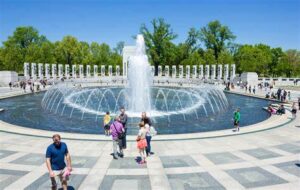 “Americans who took up the struggle during the Second World War and made the sacrifices to perpetuate the gift our forefathers entrusted to us: A nation conceived in liberty and justice.”
“Americans who took up the struggle during the Second World War and made the sacrifices to perpetuate the gift our forefathers entrusted to us: A nation conceived in liberty and justice.”
The project was funded with more than $164 million dollars in private donations, and an additional $16 million donated by the federal government. Former Kansas Senator Bob Dole, who was severely wounded in the war, and actor Tom Hanks were among its most vocal supporters. The really sad part is that only a fraction of the 16 million Americans who actually served in the would ever see it…my dad included. While he was alive in 2004, that was not a trip he got to take before his passing in 2007. Four million World War II veterans were still living at the time the memorial was finally opened, but more than 1,100 dying every day, according to government records. I find that to be so sad.
Roger Durbin of Berkey, Ohio, who served under General George S Patton, inspired the memorial. Durbin was at a fish fry near Toledo in February 1987, when he asked US Representative Marcy Kaptur why there was no memorial on the Mall to honor World War II veterans. It was a question that should have been asked and answered long ago. Nevertheless, Kaptur, an Ohio Democrat, introduced legislation to build one, starting a process that would stumble along through 17 years of legislative, legal, and artistic entanglements. Durbin died of pancreatic cancer in 2000, without ever actually seeing his hard work come to fruition. While he didn’t live to see his project come to life, I and so many other children of World War II veterans and lost loved ones, will be forever thankful to him for finally making sure our loved ones were properly honored. The monument was formally dedicated May 29, 2004, by US President George W Bush, but I am pleased that it actually opened on 
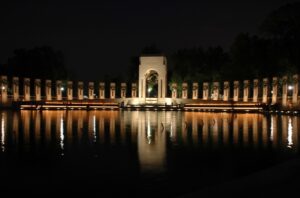 my birthday in 2004. My birthday, because it was just two days after my dad’s birthday, has always been a special time that we shared. Of course, I was due and supposed to arrive on Dad’s birthday, but I’ve always said I was a little stubborn, so I held out. Nevertheless, we usually celebrated our days together, so I feel like his memorial opening on my birthday was really very cool.
my birthday in 2004. My birthday, because it was just two days after my dad’s birthday, has always been a special time that we shared. Of course, I was due and supposed to arrive on Dad’s birthday, but I’ve always said I was a little stubborn, so I held out. Nevertheless, we usually celebrated our days together, so I feel like his memorial opening on my birthday was really very cool.
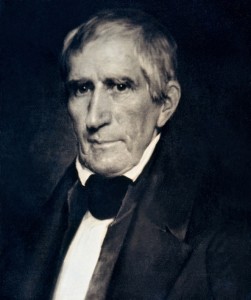
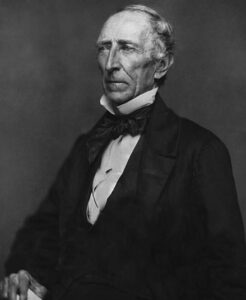 President William Harrison has the distinct record of having the shortest term in office in the history of the United States…exactly one month…from March 4, 1841 to April 4, 1841. His death and the immediate swearing in of his vice president, John Tyler on April 6, 1841, made Tyler the first vice president to immediately assume the role of president after a sitting president’s untimely exit and set the precedent for succession thereafter. It is thought that his illness was caused by the bad weather at his inauguration three weeks earlier, however, on Wednesday, March 24, 1841, Harrison took his daily morning walk to local markets, without a coat or hat. Despite being caught in a sudden rainstorm, he did not change his wet clothes upon return to the White House. He first fell ill with cold-like symptoms on Friday, March 26. His aids sent for his doctor, Thomas Miller. Harrison told the doctor he felt better after having taken medication for “fatigue and mental anxiety.” He might well have recovered from the cold, flu, or pneumonia that he was sick with at first, but to further complicate matters, Miller’s notes and records, found that the White House water supply was downstream of public sewage. With that newly revealed information, the conclusion now is that he likely died of septic shock due to “enteric fever” (typhoid or paratyphoid fever).
President William Harrison has the distinct record of having the shortest term in office in the history of the United States…exactly one month…from March 4, 1841 to April 4, 1841. His death and the immediate swearing in of his vice president, John Tyler on April 6, 1841, made Tyler the first vice president to immediately assume the role of president after a sitting president’s untimely exit and set the precedent for succession thereafter. It is thought that his illness was caused by the bad weather at his inauguration three weeks earlier, however, on Wednesday, March 24, 1841, Harrison took his daily morning walk to local markets, without a coat or hat. Despite being caught in a sudden rainstorm, he did not change his wet clothes upon return to the White House. He first fell ill with cold-like symptoms on Friday, March 26. His aids sent for his doctor, Thomas Miller. Harrison told the doctor he felt better after having taken medication for “fatigue and mental anxiety.” He might well have recovered from the cold, flu, or pneumonia that he was sick with at first, but to further complicate matters, Miller’s notes and records, found that the White House water supply was downstream of public sewage. With that newly revealed information, the conclusion now is that he likely died of septic shock due to “enteric fever” (typhoid or paratyphoid fever).
When Tyler took over, not everyone was happy about it. Tyler was a loyal supporter and advocate of states’ rights, including regarding slavery, and he adopted nationalistic policies as president only when they did not infringe on the powers of the states. His unexpected rise to the presidency posed a threat to the presidential ambitions of Henry Clay and other Whig politicians, and left Tyler estranged from both of the nation’s major political parties at the time. It was quite a predicament. When Tyler vetoed his fellow Whigs’ attempt to reestablish the National Bank, most of his cabinet resigned and he was thrown out of the Whig Party. What a 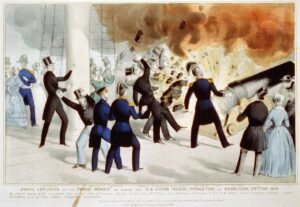 shock that must have been!! Tyler had already lost the support of the Democrats by denouncing Andrew Jackson’s policies as well, so Tyler became a president without a party. He began receiving death threats from both sides and quickly earned the enmity of Congress. His four years in office were chaotic. Nevertheless, he is credited with settling Canadian border disputes with Britain and beginning the annexation of Texas. Obviously, Tyler did not win a second term.
shock that must have been!! Tyler had already lost the support of the Democrats by denouncing Andrew Jackson’s policies as well, so Tyler became a president without a party. He began receiving death threats from both sides and quickly earned the enmity of Congress. His four years in office were chaotic. Nevertheless, he is credited with settling Canadian border disputes with Britain and beginning the annexation of Texas. Obviously, Tyler did not win a second term.
In 1844, during a cruise down the Potomac aboard the newly commissioned steam frigate USS Princeton, Tyler himself narrowly escaped death when the ships state-of-the-art cannon, called the Peacemaker, exploded as the crew fired a celebratory salute. The accident killed several people aboard, including two members of Tyler’s cabinet and his future wife’s father. Tyler was married twice. His first wife, Letitia Christian passed away in 1842, and he married Julia Gardiner in 1844. Between his two marriages, Tyler produced 15 children. Tyler’s unexpected ascendance to the presidency and the near-miss aboard the Princeton earned him the nickname of His Accidency.
After leaving the White House, Tyler retired to a Virginia plantation, originally named Walnut Grove (or “the Grove”), located on the James River in Charles City County. He renamed it Sherwood Forest, in a reference to the folk legend Robin Hood, to signify that he had been “outlawed” by the Whig Party. Tyler tried to broker a peace convention between the North and South on the eve of the Civil War, but he failed to reach an agreement with Abraham Lincoln on key issues. Denounced as a traitor by the North, Tyler fell in line with southern secessionists and, in 1861, was elected to the Confederate House of Representatives. Tyler suffered from poor health throughout his life. He was susceptible to colds and that got worse as he got older. On January 12, 1862, 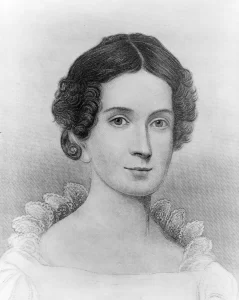
 after complaining of chills and dizziness, he vomited and collapsed. Despite treatment, his health failed to improve, and he made plans to return to Sherwood Forest by the 18th. As he lay in bed the night before, he began suffocating, and Julia summoned his doctor. Just after midnight, Tyler took a sip of brandy, and told his doctor, “Doctor, I am going”, to which the doctor replied, “I hope not, Sir.” Tyler then said, “Perhaps it is best.” He died shortly thereafter, most likely due to a stroke. He was 71. His death occurred on January 18, 1862. Tyler’s death was the only one in presidential history not to be officially recognized in Washington, because by then, his allegiance was to the Confederate States of America.
after complaining of chills and dizziness, he vomited and collapsed. Despite treatment, his health failed to improve, and he made plans to return to Sherwood Forest by the 18th. As he lay in bed the night before, he began suffocating, and Julia summoned his doctor. Just after midnight, Tyler took a sip of brandy, and told his doctor, “Doctor, I am going”, to which the doctor replied, “I hope not, Sir.” Tyler then said, “Perhaps it is best.” He died shortly thereafter, most likely due to a stroke. He was 71. His death occurred on January 18, 1862. Tyler’s death was the only one in presidential history not to be officially recognized in Washington, because by then, his allegiance was to the Confederate States of America.
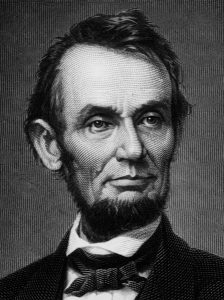
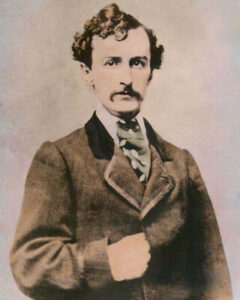 People are free to call it whatever they want to, but I prefer to follow the Biblical version, in which Joseph was warned in a dream, to move his son, Jesus to Egypt, because the Pharaoh was looking for Him so he could kill Him. Joseph heeded the warning. and the family moved immediately…like in the middle of the night, while those who were a danger to him were sleeping. Thankfully Joseph heeded that dream. Just imagine our world if he had not.
People are free to call it whatever they want to, but I prefer to follow the Biblical version, in which Joseph was warned in a dream, to move his son, Jesus to Egypt, because the Pharaoh was looking for Him so he could kill Him. Joseph heeded the warning. and the family moved immediately…like in the middle of the night, while those who were a danger to him were sleeping. Thankfully Joseph heeded that dream. Just imagine our world if he had not.
There have been other people who have had dream warnings, or prophetic dreams, whether a warning or a great blessing that was coming their way. I believe that our dreams can be a matter of God talking to us. President Abraham Lincoln was one of those people who had a prophetic dream, and it has been well documented through the years, for those of us who have chosen to listen. President Lincoln had his dream on April 4, 1865, and the dream was so troubling that he actually told it to a number of people including his wife, Mary Todd Lincoln and his former law partner, Ward Hill Lamon on April 11, 1865.
According to Lamon’s recollection, President Abraham Lincoln dreams on this night in 1865 “of ‘the subdued sobs of mourners’ and a corpse lying on a catafalque in the White House East Room.” In the dream, Lincoln asked a soldier standing guard “Who is dead in the White House?” to which the soldier replied, “the President. He was killed by an assassin.” Lincoln woke up at that point. On April 11, he told Lamon that the dream had “strangely annoyed” him ever since. Ten days after having the dream, Lincoln was shot dead by an assassin while attending the theater. Abraham Lincoln was shot by John Wilkes Booth while attending a play at Ford’s Theater in Washington DC on April 14, 1865. His assassination was the only successful leg in a conspiracy that also intended on capturing or killing Vice President Andrew Johnson and Secretary of State William Seward.
Interestingly, Lincoln supposedly later insisted to Lamon that the body on display was not his own…so he, himself did not view the dream as a warning of his own death. Some historians have discounted Lamon’s account, which was first published in the 1880s, nearly 20 years after the assassination. Nevertheless, Lamon claimed to have reconstructed the incident based on notes he made in 1865. I suppose the historians believe that since neither he nor Mary Lincoln mentioned the dream right after the president’s murder, it must not have been true. I believe that it was true, and that they were in such shock, that it never occurred to them to bring it up. Still, it is well known that Lincoln was a dreamer and was apparently quite interested in the meaning of dreams and what they have to say about future events both positive and negative. Proof of his curiosity lies in an 1863 letter to his wife, who at the time was in Philadelphia with their 10-year-old son, Tad. Lincoln writes that Mary had better “put Tad’s pistol away” as he “had an ugly dream about him.” Moreover, members of Lincoln’s cabinet recalled that, on the morning of his assassination, the president told them he’d dreamed of sailing across an unknown body of water at great speed. He also apparently revealed that he’d had the same dream repeatedly on previous occasions, before “nearly every great and important event of the War.”
The Secret Service was formed as a result of that assassination, but just imagine if they had all heeded the dream warning and placed a better guard around President Lincoln. If those he told of the dream, had considered the possibility of missing the play, or posted guards around the president, how different could have been the outcome. The world will never know, because one of our greatest presidents was gone before he could finish his second term in office. Lincoln was a very popular president. In his run against Democrat, George B 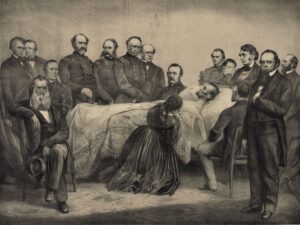
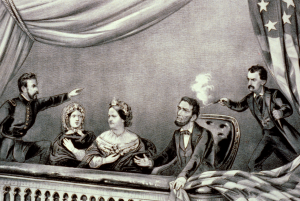 McClellan, Lincoln carried all but three states (Kentucky, New Jersey, and Delaware), and won 55 percent of the vote. He won 212 electoral votes to McClellan’s 21, which goes to show that most of the people approved of his anti-slavery policies, as opposed to the Democrats, who wanted to keep slavery, and who fought against the slaves and minority races…and still do, even to this day.
McClellan, Lincoln carried all but three states (Kentucky, New Jersey, and Delaware), and won 55 percent of the vote. He won 212 electoral votes to McClellan’s 21, which goes to show that most of the people approved of his anti-slavery policies, as opposed to the Democrats, who wanted to keep slavery, and who fought against the slaves and minority races…and still do, even to this day.

